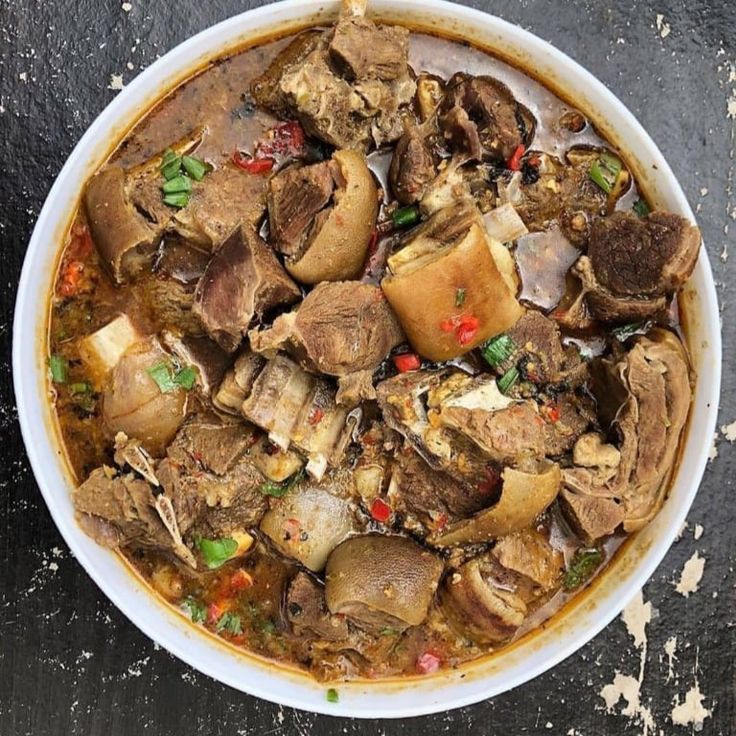Key characteristics
- Aromatic spice blend: The distinct flavor of the soup comes from a carefully curated mixture of traditional spices, which often includes calabash nutmeg (ehu), Negro pepper (uda), grains of Selim (urheri), and alligator pepper (ataiko). Some recipes also include ginger and garlic for added depth.
- Spicy and flavorful broth: Despite its name, the flavor is more than just “peppery.” The unique combination of spices creates a nuanced flavor profile with nutty, earthy, woodsy, and floral notes, complemented by the heat from scotch bonnet or habanero peppers.
- Tender goat meat: Goat meat, often cut into cutlets or chunks, is the star of the dish. It is cooked until it is exceptionally tender, having absorbed all the rich flavors of the broth. Some variations may include assorted goat parts or offal for extra richness.
- Herbal finish: Fresh scent leaves, like West African basil (nchuanwu), or utazi leaves are added near the end of cooking to contribute a final layer of fragrant, herbaceous flavor.
Culinary and cultural significance
- Year-round comfort: Goat meat peppersoup is enjoyed year-round and is especially cherished for its comforting warmth during cold weather.
- Traditional remedy: The spicy and warming ingredients in the soup are believed by many to possess medicinal qualities that help alleviate the symptoms of a cold or flu. In some traditions, it is served to new mothers to assist in postpartum healing.
- A social delicacy: Often served at gatherings, bars, and parties as a “feel-good” or recreational dish, peppersoup is a celebrated part of Cameroon and Nigerian social life.
- Customizable: The heat level can be adjusted to a diner’s preference by changing the quantity of hot peppers used. Regional variations also exist, with some cooks adding ingredients like lemongrass or specific regional spice
Be the first to review “Goat meat Pepper soup” Cancel reply
No more offers for this product!
General Inquiries
There are no inquiries yet.


Reviews
There are no reviews yet.